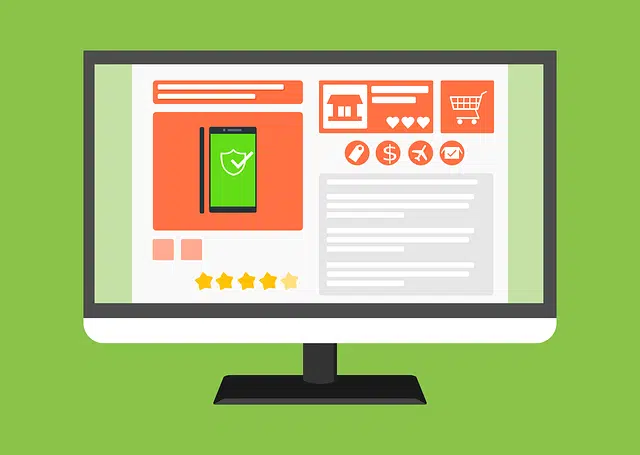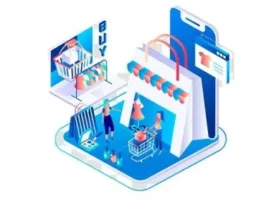Optimizing e-commerce product pages is crucial for improving user experience, increasing conversions, and driving sales. Here are some ideas to help you optimize your ecommerce product pages:
Optimized Product Pages are Essential to Boost Online Sales.
Make the customer journey through your website a seamless experience. Offer all the useful tools and aids to help customers make a quick buying decision.
Here are 10 Strategies to help you optimize ecommerce product pages
-
Offer Competitive Prices and flexible payment options
through ‘pay now, buy later’ programs like the one offered by PayPal, especially on high-value items. Attractive financing and leasing options will give your business an edge over competitors.
Develop relationships with vendors to gain rebate programs and strategic promotional deals to offer your products to customers at competitive prices. This would eventually help you achieve high-volume orders and sales through B2B and B2C channels.
What to do when it is not possible to offer discounts due to manufacturer restrictions?
By agreement with the manufacturer, eCommerce retailers are prohibited from advertising a product below a minimum price. There is a loophole though. Retailers can’t advertise but can definitely sell the product for whatever price they want. Once the product is added to the shopping cart, it does not count as an advertised price but rather as the final selling price that the retailer wants to sell the product to a customer.
You can have ‘Add to Cart to See Price’ on your product pages. The product’s discounted price remains hidden on the product page unless a user adds it to their cart. This strategy has multiple benefits. First, it encourages users to add items to the cart. Second, it builds a sense of scarcity that makes the customer eager to place the order. Third, it allows you to circumvent the MAP (Minimum Advertising Price) policy violation by manufacturers.
‘Add to Cart to See Price’ helps you sell more products due to discounted prices available to customers on the cart page. You can see this on many Amazon product listings. Amazon allows sellers to hide price by ‘See price in cart’ functionality. On the page where all product sellers are listed, you can see ‘Add to cart to see product details’ under sellers who have opted to hide the price on the product page.
Use compelling CTAs that clearly indicate the next step, such as “Add to Cart” or “Buy Now.” Make sure the CTA stands out visually and is easy to locate on the page.
You can also provide customers with price match guarantees or ask them to send an email for special price quotes.
-
Upsell and cross-sell to customers
Up-selling and cross-selling are highly recommended to increase online sales. ‘Also Available’ products and discounted bundle items when bought together in the form of ‘Frequently bought together’ add-to-cart options. Additional promotions like ‘Buy 4 and get 1 free’ can also make your offer more attractive and incentivize bulk purchases.
Leverage the sidebar of your website to upsell and cross-products to customers. It would be best to list a maximum of six products that you want to upsell or cross-sell along with the product page. Too many products lead to choice overload. You can also have last-minute deals on the shopping cart page with general-use items or products you want to quickly remove from your stock by offering them at attractive prices.
***Pro Tip- Behavior-based product recommendation
Product recommendations on the sidebar or ‘You may also like’ section are usually based on the most popular items, closely related items, product accessories, and so on. To increase conversion rates and AOV, consider providing personalized and intelligent recommendations based on customers’ individual preferences or behavioral data. Recommendation engines or SaaS solutions can help you discover customers’ shopping patterns, website journey, purchase history, and frequently bought-together items. Your suggested product recommendations can be made more personalized and relevant to each individual shopper.
-
Clearly mention the stock quantities and shipping time on your product pages
You can use urgency marketing to convey that the product is selling fast and few items are left in stock. Shipping offers such as free ground-day shipping can be provided if the customer purchases within the next 20 minutes.
Make Auto-reorder option available on items of routine purchase. Give your Auto-Reorder customers special discounts and shipping options as they are the most valuable repeat customers who have subscribed to your business for the long term.
-
Use exit coupon pop-ups
Exit pop-ups come in handy when you want to discourage users from leaving your website or abandoning the cart. A discount offer would pop up whenever the customer would move the mouse towards the ‘close the window’ button.
-
Help users find the right products
Intuitive product finders, voice search bar, live chat, buying guides, toll-free phone numbers, or mail for expert advice help customers find the right product for their needs. Providing useful information to customers through comparison charts, size charts, documents, and resources helps you win their trust.
Don’t just share information about your product — boring statistics, figures, features, etc. Instead, show how your product works in specific examples. Use cases studies and user testimonials to build their confidence in your products.
Write concise, engaging, and informative product descriptions. Highlight key features, benefits, and specifications. Use bullet points or subheadings to make the information scannable.
Use high-resolution images that showcase the product from multiple angles. Allow users to zoom in and view details. Consider including lifestyle or contextual images to help customers visualize product use. Use product videos to show the product in action or demonstrate its features and benefits.
Optimize your product pages for mobile devices to accommodate the growing number of users who shop on smartphones and tablets. Ensure that the page layout, images, and buttons are all mobile-responsive.
Offer live chat or a visible customer support contact option on the product page. This allows users to ask questions and receive immediate assistance, enhancing their shopping experience.
-
Offer alternatives or substitute products
If the original product is unavailable or out of stock. You can also set up in-stock alerts for customers. Though the product is unavailable now, customers can sign-up for an email alert when the product is back in stock.
-
Gain as many product reviews as possible
Get reviews on your products and display them prominently on websites. Make it easy for people to write product reviews. Also, have a question and answer feature on the website where customers can ask questions or post their replies to questions asked by other customers. This user-generated content can boost your SEO efforts and make your business look more credible.
Genuine reviews help increase sales, build trust, and provide social proof. Consider implementing a trustworthy review system and encourage customers to leave feedback.
-
Have Social Sharing Buttons
Social Sharing Buttons on all pages of your website are essential both for social sharing and Social signals for product SEO. You can also give incentives like a discount coupon to share your product or service pages. Apart from increasing brand visibility and promotion, social sharing is an important SEO signal for search engines, especially for search engines like Bing and Yahoo.
Implement a wishlist feature that allows users to save products for future reference or purchase.
-
Pricing Strategy for Multiple Options
Comparative packet pricing-
For instance, a toffee business sells a packet of 10 toffees for $1.50 and a packet of 20 toffees for $5. The customer would think, “Let’s buy two packets of 10 toffees for $3 instead of 20 toffees for $5”.
The business used the above comparative packet pricing strategy on purpose to emphasize their $1.50 for 10 toffee deal to encourage people to buy more $1.50 packets. So while people believe they got a better deal, the toffee business successfully sold more packets.
Decoy effect Pricing-
For different variations of the same product, the preference of customers changes from option A (less profitable) to option B (more profitable), when a new option C (decoy option) is presented to them, which makes them a more profitable option seem more attractive.
The decoy effect works well with the small-medium-large systems. When a business makes the large system a relatively cheap upgrade from medium compared to the small, they get more money, while the cost of the upgrade is still low.
Example of Decoy Pricing-
Pricing of a popular magazine subscription
- Option A – Online Subscription – $49
- Option B – Print Subscription – $100
- Option C – Online + Print Subscription – $120
When options A and B were presented, option A was considered desirable for the majority of people. When a decoy option C was added to the mix, the deal appeared more attractive to the people.
Pricing of Smartphones
iPhone – $799
iPhone Pro – $999
iPhone Pro Max – $1099
People who would have normally bought iPhone Pro preferred to buy iPhone Pro Max, which is a decoy option.
Decoy Effect in Shipping-
A – Standard Shipping (receive in 7 days) – $4.99
B – Priority Shipping (receive in 4 days) – $7.99
C – Express Priority (receive in 3 days) – $8.99
The majority of people choose option C, which is the most profitable option for the company.
-
Confirmation bias in Customer Journey
People tend to search, focus, interpret and remember information in a way that confirms their own beliefs and preconceptions. Catering to customers emotionally and validating their existing prejudices makes them like and bond with your business.
On each step of the customer journey, make the customer feel validated by appreciating their choice. This is important to create customer loyalty. Tell them that they have made the best decision by committing to your product/service.
Praise the customer for each milestone they achieve. Validate and reward every choice they make as they move towards the checkout page. For example, you can have an automated live chat message with affirmative words on the landing page. A caption above the add-to-cart button tells them the dollars they have saved or the cashback they will earn if they make the purchase. The cart page can actively highlight their choice and the benefits they are about to receive.
On your thank-you page, encourage customers to write a review for your business. It will help acquire new customers and generate a sense of loyalty among existing customers.
Add Zero-risk bias in the mix –
The feeling of certainty and security is something people love, even if it’s counterproductive. When customers land on your website, tell them that your website is safe and secure, and they can trust your business. Tell them that purchasing your product or service is risk-free through limited-time free trials, easy return policy, price match offers, and refund guarantees.
Display clear information about shipping options, estimated delivery times, and return policies. Transparency in these areas builds trust and reduces cart abandonment.
The key to optimizing ecommerce product pages is to focus on improving user experience, providing relevant information, and addressing customer needs. Regularly monitor analytics, gather customer feedback, and iterate on your pages based on the insights gained. Continuously test different elements of your product pages, such as layouts, colors, CTAs, and images, to identify what resonates best with your audience and drives higher conversions.

Hunaid Germanwala is a digital marketer and content creator at Health Products For You since 2014. He has an MS from Ulm University in Germany. His mind is always buzzing with creative ideas and is eager to explore new perspectives. His motto in life is “Better to Light the Candle than to Curse the Darkness.”













Leave a Reply